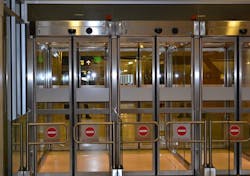Airports Concerned about TSA Plans to Stop Staffing Exit Lanes
One week after the fatal shooting of an on-duty TSA employee, the nation's airport officials and the TSA remain in a dispute over a decision to stop staffing exit lanes at airport security checkpoints by year's end.
The TSA ordered airports to take over monitoring exit lanes in early 2014 in April. At that time the TSA indicated it does not consider exit lanes part of its screening function.
TSA spokesman, Ross Feinstein, said transferring that task to airports would allow the agency to focus on screening passengers and baggage and cut $88.1 million a year from its budget .
The plan isn't sitting well with many airport authorities and industry trade groups who fear the plan will add millions of dollars to airport operating budgets. “Our position is quite simple: We believe first and foremost that exit lane monitoring is the responsibility of the TSA,” said Keith Brune, director deputy of operations and facilities at Philadelphia International Airport. He further estimates that staffing the airport's exit lanes could cost the up to $3 million a year.
In the November 1 shooting at Los Angeles International Airport, authorities believe the suspect may have entered the secure area of the airport through just such an exit lane.
This is not the first time this has happened. In January, 2010,a man breached the exit lanes at Newark Liberty International Airport to kiss his girlfriend goodbye. The TSA shut down the airport terminal for three hours, until the man waslocated and arrested.
Currently the TSA staffs exit lanes at about a third of the nation’s airports. Other airports either staff the lanes themselves or, in some cases, share the responsibility with the TSA. A few, including Seattle-Tacoma International, Philadelphia International and McCarran International Airport in Las Vegas, have begun installing some unmanned, automated exit lanes.
